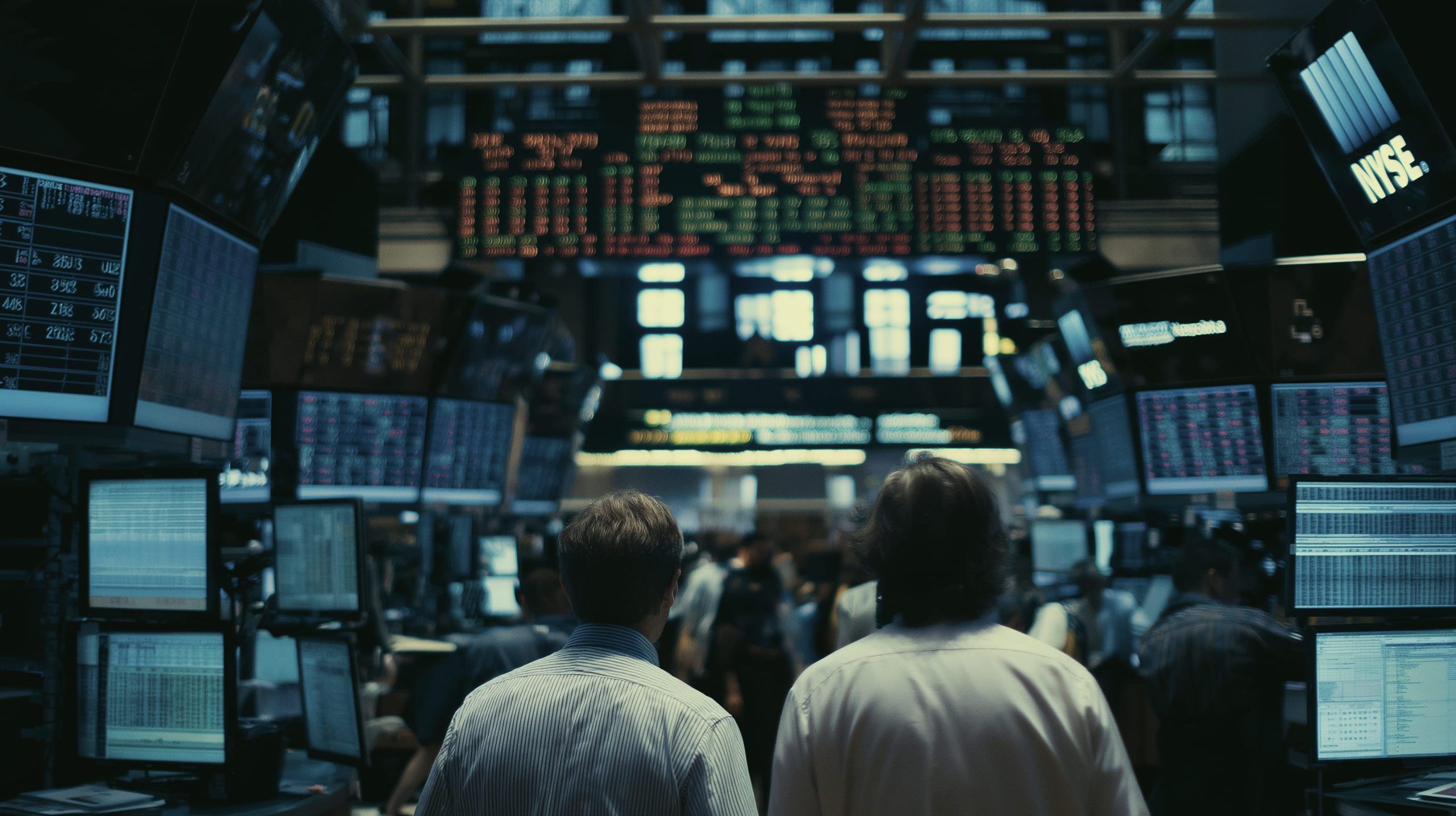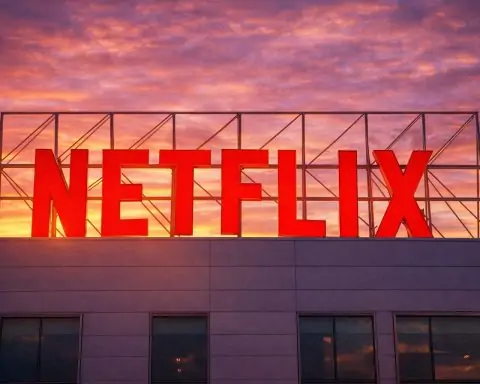- Stock indices gained on Sept. 30: The S&P 500 rose about 0.4%, the Dow Jones Industrial Average climbed 0.2%, and the Nasdaq Composite added 0.3% [1]. The gains capped one of the market’s strongest September showings in over a decade (the S&P 500’s September gain of ~3.5% was the largest since 2010) [2] [3].
- Sector moves: Defensive and tech sectors led the market. Healthcare stocks jumped (the S&P Health sector was up ~2.5%), driven by Pfizer’s 6.8% rally after a White House drug-price deal [4]. By contrast, airline stocks tumbled (the Dow Transports fell ~0.4%) on fears that a partial government shutdown could disrupt flights [5]. Tech gains were more modest (the Nasdaq’s 0.3% rise on Sept. 30 reflected mixed big-tech results). Energy stocks held firm as oil prices steadied around the mid-$60s per barrel [6]. Financials were largely flat amid the uncertainty.
- Federal Reserve outlook: Markets are overwhelmingly pricing in a Fed rate cut in October (implied odds ~95% [7]). Fed officials have echoed this dovish tilt: Vice Chair Philip Jefferson warned the labor market could “face stress” without policy support, and Boston Fed head Susan Collins said she is open to additional rate cuts [8]. Indeed, traders see a nearly certain 0.25-point cut at the Oct. 28-29 Fed meeting [9].
- Key data and economics: In August, U.S. job openings barely ticked up (+19,000 to 7.227 million) while hiring declined, signaling a cooling labor market [10]. Correspondingly, the Conference Board’s consumer confidence index slid to 94.2 in September (below forecasts) amid growing job-availability worries [11]. With the shutdown jeopardizing Friday’s official payroll release, investors will focus on private indicators such as Wednesday’s ADP report (consensus ~+50,000 jobs [12]) and early-October manufacturing PMI for clues to labor and inflation trends.
- Global and geopolitical factors: A U.S. funding lapse began Oct. 1, furloughing ~750,000 federal workers and halting many data releases [13] [14]. This creates a near-term data vacuum around the payrolls report. Meanwhile, President Trump’s new tariffs on trucks and drugs took effect Oct. 1 [15], and markets also weighed OPEC+ news: an anticipated 500,000 barrels/day production hike kept oil prices in check [16]. Gold surged to a new record (~$3,895/oz) as investors sought safe havens [17] [18].
Market Performance (Sept. 30 & Oct. 1)
U.S. stock markets closed Sept. 30 higher, ending the month on a positive note. The S&P 500 closed at 6,688.46 (+0.41%), the Dow at 46,397.89 (+0.18%), and the Nasdaq at 22,660.01 (+0.31%) [19]. All three indices notched monthly and quarterly gains: for September, the S&P rose about 3.5% (its best September since 2010) [20] [21], and the Dow and Nasdaq each notched their largest one-month rise since 2019. This pushed the Dow to another record closing high [22]. Defensive sectors (health care, consumer staples, utilities) outperformed, while cyclical areas (airlines, transports) lagged due to shutdown risks.
On Wednesday, Oct. 1, U.S. markets opened in the red. In pre-market futures, the Dow e-mini futures were down roughly 0.66%, and S&P and Nasdaq futures fell about 0.8–0.9% [23], as traders mulled the government shutdown and the delayed release of key data. Early trading globally was choppy: European stocks were modestly higher (STOXX Europe 600 +0.5%) [24], but Asia was mixed (Japan’s Nikkei fell ~1% while Taiwan and South Korea were up slightly) [25]. U.S. Treasuries and the dollar showed safe-haven flows (the dollar index eased to a one-week low [26]) while gold held at record highs [27].
Sector Highlights
Healthcare: Led by pharmaceutical names, health-care stocks outperformed. Pfizer jumped ~6.8% after President Trump announced it would sharply cut drug prices in exchange for tariff relief [28]. Other drugmakers also rallied on hopes of similar deals. By sector, S&P health-care was up ~2.45% on Sept. 30 [29], the largest sector gain of the day.
Airlines/Transports: Travel stocks sold off amid the shutdown. The Dow Jones Transportation Average fell about 0.4% [30], led by airlines (Southwest -2.6%, United -2.2% [31]). Analysts noted that a partial shutdown could impair air traffic control and TSA operations, disrupting travel. The U.S. Transportation Dept. even announced that roughly 11,000 FAA employees (about 25% of staff) could be furloughed if funding lapses [32], heightening flight-related concerns.
Technology: The Nasdaq’s modest advance (~0.3%) reflected mixed tech results. Megacap software/Internet names were relatively flat to mildly positive, while some growth stocks saw profit-taking. Notably, chipmaker Wolfspeed (WOLF) surged ~29% on Sept. 30 after emerging from bankruptcy [33]. Otherwise, the Nasdaq gains were broad but tempered by caution over valuations.
Energy: Energy stocks were steady as oil prices paused a recent decline. Brent crude traded near $66/bbl and WTI around $62 [34]. The industry is digesting reports that OPEC+ may boost output by ~500,000 barrels/day next month [35], which has capped oil’s rally. Overall, oil majors finished roughly unchanged on the day. Notably, utility and commodity names were mixed, with no major moves mentioned for big U.S. oil firms that day.
Financials: Banks and insurers saw little action. Treasury yields fluctuated only mildly (10-year note ~4.75%), so financials held roughly flat. Sector strategist Mark Luschini observed that the market’s mix of defensive (e.g. health care, staples) and cyclical (e.g. industrials) leadership suggested “lack of significant conviction” in any one direction [36]. Institutional flows hinted at cautious positioning ahead of fiscal talks in Washington.
Corporate Earnings & Stock Movers
A handful of companies made big moves on earnings or news:
- Consumer/Industrial: Lamb Weston (frozen potato foods maker) jumped ~4.3% [37] after beating first-quarter revenue and profit estimates. By contrast, Firefly Aerospace plunged ~20.7% [38] after a rocket engine test destroyed its booster stage.
- Specialty/Materials: Lithium Americas (a battery minerals company) shot up ~39% pre-market Oct. 1 [39] when the U.S. Energy Dept. announced a 5% equity stake in the company. Wolfspeed (chipmaking) soared ~29% after its bankruptcy exit [40].
- Retail/Consumer: Nike shares rose ~3% in pre-market trading on Oct. 1 [41] after the sportswear giant reported stronger-than-expected revenue in its fiscal first quarter. Other retail and consumer names saw mixed results, with no broad rallies aside from Nike’s.
Overall, none of the moves above were large enough to sway broad indexes, but they underscored investor focus on corporate results and specific news amid the market’s calm.
Economic Data & Indicators
Several economic reports set the backdrop:
- August JOLTS (Job Openings and Labor Turnover): Released Sept. 30, it showed U.S. job openings up slightly (+19,000 to 7.227 million) while hiring and quits fell [42]. This “moderate” rise in openings amid weakening hiring underscores a stagnating labor market that could justify Fed rate cuts [43]. In fact, Fed-watchers note such slowing may permit rate easing at the October FOMC meeting [44].
- Consumer Confidence (Sep): The Conference Board reported on Sept. 30 that its index fell to 94.2 in September (from 97.8 in August) [45], well below expectations. Consumers’ outlook on jobs was the weakest since early 2021 [46], consistent with the softer JOLTS data. The confidence slide added to caution about household spending power.
- Upcoming reports: The shutdown means the government’s October jobs report (due Oct. 3) will be postponed [47]. In its place, investors will scrutinize private data: the ADP payroll report (released Oct. 1, forecast ~+50K [48]) and the Sept. ISM Manufacturing PMI are in focus. Eurozone flash inflation (expected to rise slightly) and China’s holiday-shortened markets will also be watched for global cues [49].
In sum, the data point to a labor market losing steam: analysts say it will take much weaker jobs numbers to tilt the Fed away from cutting rates [50] [51].
Federal Reserve & Interest Rates
The October Fed meeting is now front and center. Markets are overwhelmingly pricing in a quarter-point rate cut. Data from LSEG’s FedWatch (Fed funds futures) imply about a 95–96% chance of a 0.25% reduction on Oct. 29–30 [52]. This reflects growing concern over the labor market: Fed Chair Powell himself recently signaled a cut amid “curious” imbalances of slow job growth and stubborn inflation.
Fed officials echoed the easing bias. Vice Chair Philip Jefferson warned Sept. 30 that the job market “could face stress” without accommodation, and Boston Fed President Susan Collins said she was open to further cuts [53]. With no fresh data due to the shutdown, traders have little to doubt the cut: one strategist noted markets are focused on what’s not happening – no payroll data means the Fed might have to act on incomplete information [54] [55].
Several analysts say this dovish Fed stance justifies the stock rally. As an eToro analyst put it, “a government shutdown is disruptive, but now isn’t exactly the time that investors, or the Fed, want to lose access to key economic data points” [56]. In other words, Fed rate cuts are expected to remain the main support for equities in early October.
Geopolitical & Global Context
U.S. Shutdown: The U.S. funding cutoff began Oct. 1 at 0400 GMT [57]. It will furlough roughly 750,000 workers and freeze much of the federal government. Crucially, agencies warned that key reports – including Friday’s nonfarm payrolls – will be delayed or canceled until funding resumes [58] [59]. The uncertainty has muddied the market outlook. Morgan Stanley’s Monica Guerra said a full shutdown “appears increasingly likely” on Oct. 1 [60], but analysts debate the market impact: Treasury currency strategists note that in past shutdowns stocks usually held steady or rose modestly [61], while others caution a longer shutdown could dent confidence.
Trade/Tariffs: On Oct. 1, new U.S. import tariffs on large trucks, drugs and other goods took effect [62]. White House aides assured markets that tariff revenues would still flow despite the shutdown. Separately, the Pfizer drug-pricing deal announced Sept. 30 removes some tariff pressures on healthcare companies, helping fuel the healthcare rally [63].
Global Markets: The shutdown’s ripple effects were seen internationally. In Europe, stock indexes were broadly flat-to-higher Sept. 30 (the STOXX 600 closed ~+0.5%) [64]. In Asia on Oct. 1, Japan’s Nikkei slid about 1% and Hong Kong’s Hang Seng was weaker after months of strength, while Taiwan and South Korea eked out small gains [65]. Commodities showed classic safe-haven flows: gold extended its rally to a third record high in three sessions (near $3,875/oz) [66] [67].
Oil & Energy: Oil prices recovered modestly after a sharp two-day decline. Traders weighed reports that OPEC+ may raise output by up to 0.5 million barrels per day in November [68]. By early Oct. 1, Brent crude was around $66.09 and WTI around $62.41 [69]. Energy equities on Wall Street were essentially unchanged – investors are cautious as demand concerns (from a U.S. economic slowdown) compete with supply worries (e.g. Russian war-related disruptions).
Outlook & Expert Commentary
Looking ahead, analysts will watch whether Washington ends the shutdown quickly. A prolonged impasse could begin to weigh on consumer and business sentiment beyond historical norms. For now, however, many strategists see the shutdown as a “temporary distraction” rather than a market blowup. Danske Bank strategist Lars Skovgaard commented that the shutdown “ought not to have any major effect on markets” [70]. Other experts agree that with U.S. stocks at or near all-time highs and the Fed poised to cut rates, the momentum could carry into Q4: Janney’s Mark Luschini noted the market’s “balanced” leadership mix (defensive and cyclical gains) as evidence that “stocks could be tipped either way very quickly” [71], depending on news flow.
Institutions like BlackRock also remain constructive: in late September they highlighted U.S. stocks near records and continued corporate buybacks as bullish factors. However, caution is rising. All eyes are now on the truncated jobs and inflation data for October, as well as the October 28–29 Fed meeting. In sum, investors are asking whether the shutdown will materially dent the U.S. growth outlook or simply postpone it. For now, markets are betting on the latter – keeping stock prices high but on edge.
Sources: Data and quotes are drawn from Reuters and Associated Press market reports (as cited) and from expert commentary by financial institutions (e.g. Morgan Stanley, Danske Bank, eToro) [72] [73] [74] [75]. Each statistic and claim above is supported by the linked sources.
References
1. www.reuters.com, 2. www.reuters.com, 3. www.reuters.com, 4. www.reuters.com, 5. www.reuters.com, 6. www.reuters.com, 7. www.reuters.com, 8. www.reuters.com, 9. www.reuters.com, 10. www.reuters.com, 11. www.reuters.com, 12. www.reuters.com, 13. www.reuters.com, 14. www.reuters.com, 15. www.reuters.com, 16. www.reuters.com, 17. www.reuters.com, 18. www.reuters.com, 19. www.reuters.com, 20. www.reuters.com, 21. www.reuters.com, 22. www.reuters.com, 23. www.reuters.com, 24. www.reuters.com, 25. www.reuters.com, 26. www.reuters.com, 27. www.reuters.com, 28. www.reuters.com, 29. www.reuters.com, 30. www.reuters.com, 31. www.reuters.com, 32. www.reuters.com, 33. www.reuters.com, 34. www.reuters.com, 35. www.reuters.com, 36. www.reuters.com, 37. www.reuters.com, 38. www.reuters.com, 39. www.reuters.com, 40. www.reuters.com, 41. www.reuters.com, 42. www.reuters.com, 43. www.reuters.com, 44. www.reuters.com, 45. www.reuters.com, 46. www.reuters.com, 47. www.reuters.com, 48. www.reuters.com, 49. www.reuters.com, 50. www.reuters.com, 51. www.reuters.com, 52. www.reuters.com, 53. www.reuters.com, 54. www.reuters.com, 55. www.reuters.com, 56. www.reuters.com, 57. www.reuters.com, 58. www.reuters.com, 59. www.reuters.com, 60. www.reuters.com, 61. www.reuters.com, 62. www.reuters.com, 63. www.reuters.com, 64. www.reuters.com, 65. www.reuters.com, 66. www.reuters.com, 67. www.reuters.com, 68. www.reuters.com, 69. www.reuters.com, 70. www.reuters.com, 71. www.reuters.com, 72. www.reuters.com, 73. www.reuters.com, 74. www.reuters.com, 75. www.reuters.com









